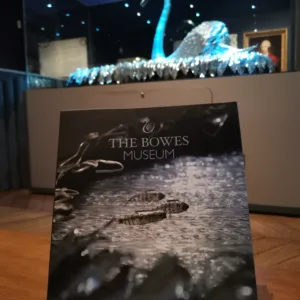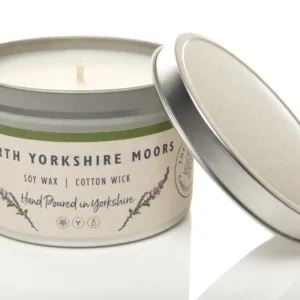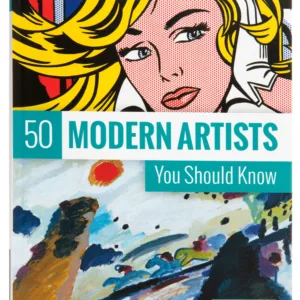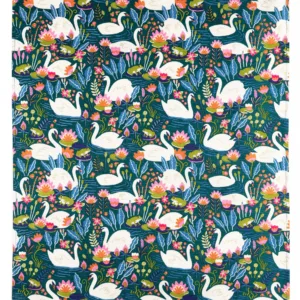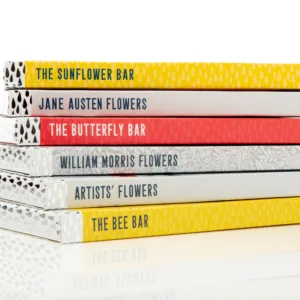The Bowes Museum Blog

Tales from the Archive: Joséphine and the French Prophetess
The central dome of The Bowes Museum houses the Museum’s Reading Room and Archive. Aside from panoramic views of Teesdale, it is well worth making the trip up to the top of the Museum for the contents of the collection, open to the public one and a half days a week. While the reference library contains books on all aspects of the main collection (painting, textiles, decorative arts) and volumes of local interest, the archive is home to the library of John and Joséphine Bowes.
The focus of my placement at the Museum, funded by the AHRC Northern Bridge Doctoral Training Partnership, is to provide a comprehensive catalogue of the collection of French texts that form the heart of this archive. Containing over 1200 volumes, items in the collection includes nineteenth-century Romantic fiction, French poetry, memoirs of notable French figures from throughout the country’s history, period newspapers, fashion magazines, and much more besides. It is hoped that by exploring this rich and fascinating archive we can learn more about John and Joséphine through their literary interests and in turn shed further light on the Museum’s wider collection.
One such instance of these connections is the recurrence across the collection of Marie-Anne Lenormand. Not a name on everyone’s lips these day, but in the Napoleonic era she was a major figure at the French court. Born in Alençon in 1772, Lenormand became renowned as a mystic and prophetess. She claimed to have given predictions to a host of prominent individuals, such as author Germaine de Staël, central figures of the French Revolution including Maximilien Robespierre and Jean-Paul Marat, and even Tsar Alexander I of Russia. But it is for her close relationship with Empress Joséphine, wife of Napoleon Bonaparte, that she is best remembered.

Empress Joséphine as she appears on the inside cover of Lenormand’s ‘Mémoires de l’Impératrice Joséphine’
Empress Joséphine was intensely fascinated by the occult, much to Napoleon’s frustration. She had interests in tarot, necromancy, and other occult arts, but she was so taken by Lenormand that the mystic would become one of her closest confidantes. Through this illustrious connection Lenormand’s fame was secured.
Though she was not to all tastes, and repeatedly found herself imprisoned, if only ever for short periods. Initially incarcerated for attempting to save Marie Antoinette from execution, she is alleged to have successfully foreseen Robespierre’s execution, Louis-Philippe’s rise to the throne, Joséphine’s divorce from Napoleon, and Napoleon’s eventual fall and death in exile. Obviously these predictions ruffled feathers – Napoleon was hardly pleased with the news of his future demise, and his wife’s persistent interest in Lenormand proved a source of conflict in his marriage. One of Lenormand’s short stints in prison occurred whilst Napoleon finalised his divorce from Joséphine in 1809, which she had predicted when she read his palm in 1807, and her prediction of his death in exile was rumoured to be accurate to the day. This renowned accuracy of her predictions led, in 1811, to her even being asked to join the French secret police!

Portrait of Marie-Anne Lenormand by Jeanne-Philiberte Ledoux
By 1820, however, Lenormand had left Paris and renounced horoscopes, claiming her days as a prophetess were over. She now turned her hand to writing, and began a second career as an authoress, producing a number of works including the Mémoires de l’Impératrice Joséphine (Memoirs of Empress Joséphine). Filling three volumes, the work included anecdotes from Lenormand’s relationship with Empress Joséphine, and even a copy of a letter of support Joséphine wrote to her when Lenormand faced persecution. These memoirs were dedicated to Tsar Alexander I, who sent her a diamond ring in acknowledgement. Lenormand died in 1843, and is now buried in Père Lachaise cemetery in Paris.

Spine and inside front cover of the first volume of Marie-Anne Lenormand’s ‘Mémoires historiques et secrets de l’Impératrice Joséphine’, held in the Bowes archive
By all accounts, Lenormand is a fascinating figure, and interest in her endured beyond her death. She is well known in tarot circles, and Alexandre Dumas, author of The Three Musketeers, immortalised her in his novel Les Blancs et les bleus (The Whites and the Blues). And it is here that the Bowes enter the tale, for the Museum’s collection reveals they too had an interest in this figure. The collected literary works of Lenormand appear in the catalogue of Joséphine Bowes’s books held at Streatlam, and are now part of the archive at the Museum. Of course, Lenormand wrote about Empress Joséphine, a figure of interest for Joséphine Bowes. But the collections suggest a greater interest in Lenormand herself than just through her association with Joséphine’s namesake, for the Museum also contains the portrait of Lenormand painted by Jeanne-Philiberte Ledoux pictured above, which currently hangs in the picture gallery alongside the portraits of Napoleon and his family.

Catalogue of the books of ‘Madame Bowes’ at Streatlam from 1869.

Lenormand’s works appear here at the top of page 14
It is even possible that Joséphine Bowes emulated Joséphine Bonaparte with an interest in the occult. Although much less pronounced than Empress Joséphine’s, the Museum’s collection also includes tarot cards purchased in the 1860s, and in the archive of Joséphine’s library we find a book about cartomancy written by Paul Boiteau d’Ambly containing a chapter on Lenormand, as well as a volume of prophecies by sixteenth-century French seer Nostradamus. It is of course dangerous to draw such conclusions without knowing for certain how Joséphine used these objects; perhaps this is just another element of the Museum’s collection that reflects a fashionable nineteenth-century pastime. But what we can learn from the archive certainly adds a further dimension to the objects the Museum holds.

Drawing of Nostradamus by Aimé de Lemud
From this brief glimpse into the Bowes literary archive, it is clear that this resource can reveal much about our Museum’s founders, and about nineteenth-century history and culture more broadly. This unique collection, I’m sure, has a great many more tales to tell….
By James Illingworth, PhD Intern, Library & Archive

